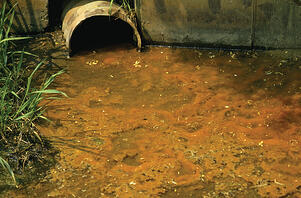 The Resurgence of Onodaga Lake - Part 2
The Resurgence of Onodaga Lake - Part 2
This is part two of the Onondaga Lake story, one of prosperity, pollution and revival. In part one, we documented the collapse of the lake, detailing the years of pollution from the municipal sewage plant and surrounding factories. In this post, we will focus on what happened once rescue efforts started in the 1970s until the 21st century.
As we described in part one of this story, in the 1800s, Onondaga Lake was home to resorts, amusement parks and beaches. Over time, the lake became a dumping ground for waste. One of the company’s along the lake produced soda ash beginning in 1884. “Roughly 6 million pounds of salty wastes, made up of chloride, sodium and calcium were discharged daily to Onondaga Lake from the soda ash facility before it closed in 1986.”[i] And from 1946 to 190, experts estimate roughly 165,000 pounds of mercury were also dumped in the lake.
Resorts closed and swimming was finally banned in the 1940s, and “In the early morning of Thanksgiving Day 1943, a dike, holding back a series of Solvay waste beds, failed,”[ii] flooding a two-mile area around the lake. While no one was killed, rescuers suffered chemical burns. For many in the region, this was the wake-up call. By the 1950s, the lake bottom and tributaries and waste beds, were contaminated with benzene, toluene, PCBs, cadmium and chromium. The waste beds had grown to more than 80 feet high, covering over three square miles.
In the early 1970s, fishing in the lake was banned, and work was finally initiated to clean up the contamination and restore the water quality. Various laws were passed around this time, including the Federal Clean Water Act in 1972, which established minimum wastewater cleanup standards and set up grants to help municipalities fund upgrades and construction of new treatment plants. A sewage treatment plant was built in 1979 on the south shore of the lake, and the water quality gradually improved, but not enough to meet the Federal water quality standards by the 1990s. In fact, the plant was still the most significant contributor of phosphorus and ammonia deposits in the lake.
An historic agreement was signed in 1998 between Onondaga County and the Department of Environmental Conservation, the State Attorney General and the Atlantic States Legal Foundation. As part of the agreement, the county was required to “reduce bacteria and floating waste reaching the lake from sewer overflows, and to monitor water quality of the lake and its major tributaries.”[iii] With the sewage plant committed to reducing phosphorus and ammonium discharges, progress on the lake’s water quality accelerated, and the community was heading into the 21st century with some optimism about a revival of Onondaga Lake.
In part three, we will cover what has happened in the last 10-15 years as part of the largest restoration project in the country. The project has received international attention as a model for cleaning polluted lakes and has brought a “public treasure” back to life.
Teledyne Leeman Labs and their sister company Teledyne Tekmar's analytical instruments are used to test water for mercury and Volatile Organic Compounds (VOCs). For more information on these instruments, be sure to visit the products pages
Inductively Coupled Plasma Spectrometers (ICP-OES)
Volatile Organic Compound (VOC) Analyzers
[i] http://www.onondaganation.org/land-rights/onondaga-lake/
[ii] http://www.dec.ny.gov/docs/water_pdf/olreturntoglory.pdf
[iii] ibid

